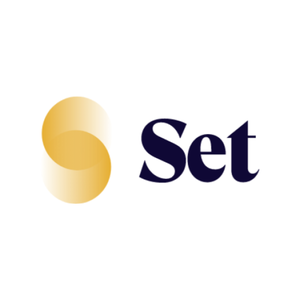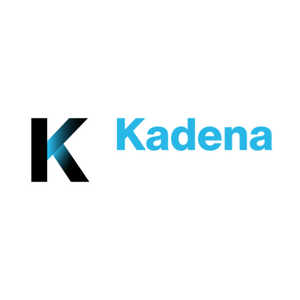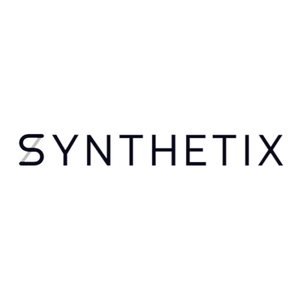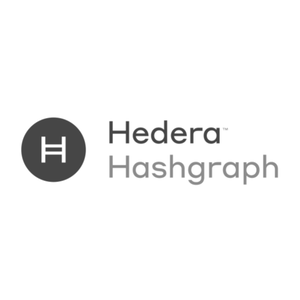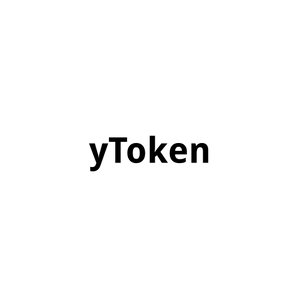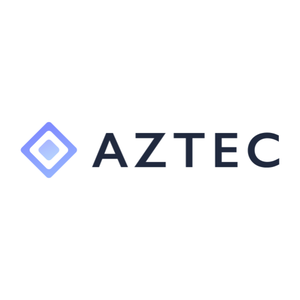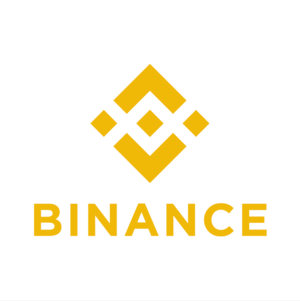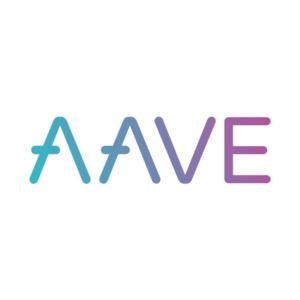Crypto AMA with Set Protocol (7.17.19)
Spencer Noon Dec 7, 2019
- Inje Yeo
- Brian Weickmann
- Richard Liang
Now let’s give a warm welcome to Inje Yeo (Co-founder), Brian Weickmann (Technical Operations) and Richard Liang (Growth) of Set!
As a reminder for everyone participating—please keep the discussion respectful and on-topic at all times.
Guys—could you start off by giving us a brief bio on your backgrounds as well as how you got started in crypto? And then a short overview of Set and a brief update on your progress to date? We’ll then be off to the races with questions.
Welcome
🔥🔥🔥
Welcome!
👋
Howdy y'all! Excited to be here
As for a quick intro...My first job out of college was as a natural gas options market maker for DRW. I ultimately didn't lvoe market making so I left and taught myself programming which led into some consulting jobs. At some point I took a break and traveled around Southeast Asia where I got into crypto (shoutout Bitcoins in Bali) originally by trading it and then exploring the tech. One thing led to another and I got into Solidity then met the Set guys and now here we are.
Hi, I’m Inje, a Co-founder at Set. I handle the design, front end engineering, and product at Set. My crypto origin story started when my friend showed me how to mine Bitcoin in 2010. Around that time, it was a novel idea for us that you could create money by putting your computer to work, and that interest started to grow from there. Fast forward to a year or two ago, I started working at Purse working on bcoin, a javascript implementation of the Bitcoin protocol, until I decided to dive in head first into working on Set.
Hey everyone, great to be here. I’m Richard and work on Growth Ops at Set Protocol. I first got started with crypto / blockchain in 2015. At that time, I was a management consultant and all the hype was in still in enterprise. Ethereum came out that same year and I knew that this might be big. Invested in the DAO in 2016 and fast forward a few years, and I joined the guys at Set
Hey guys! Congrats on all of your progress. I have three q's somewhat all over the place so feel free to answer separately
1) Why USDC instead of DAI in the new ETH SET (all others use DAI)
2) Is there a slippery slope potential for people to mass roll out SETs (ETH 19DAY MA and ETH 18 Day MA) to undercut the performance of current SETs, or if a SET gets large enough could funds game the system in a similar fashion (quant setting up a 19day ETH MA strategy) - this assumes SETs grow to have a lot in AUM where this can be an issue.
3) when will SETs start charging fees?
Awesome, thanks for the background guys! Mind providing a brief update on Set
As an overview for Set, we’re a platform that allows you to easily buy crypto assets that automatically enact portfolio management stategies. We publicly released TokenSets and the MainNet protocol around mid April with the Range Bound and Buy & Hold strategies. Two days ago we released our new Trend Trading strategy along with the ETH 20 Day Moving Average Set that automatically enacts popular trading strategies based on technical indicators such as the 20 day moving average in the ETH20SMACO Set example.
How do you plan to scale this into a proper business?
hey guys, how are Sets like ETH 20-day MA taxed in US? Taxable event when entering a SET with ETH? Is every auto trade/rebalance a gain/loss event? Similar tax treatment as a robo-advisor like wealthfront?
Hey Tom! 1) We're starting with USDC mainly for operational purposes: liquidity for rebalances and redeem-ability to USD. Rebalances for the new ETH20SMACO Set will be much larger than any other Set and market makers (rebalance auction participants) prefer to hold a token that can be redeemable 1:1. That said, we do plan to follow up with either Dai or cDai in Trend Trading Sets soon
1
The question on everyone's mind 🙂 - we know you don't give out tax advice, but sharing what you've heard on this front would be very helpful to this group. Thanks guys.
3. We haven’t fully specced out the fees on Set yet so there isn’t a definitive timeline or method that we’d charge fees atm. Fees aren’t something that we can simply flip on right now since it isn’t built in. Depending on where fees are placed, we’d need to create a new Rebalancing Set Token interface to accomodate fees on the Set token level, or upgrade a contract elsewhere.
To answer 2) We're definitely concerned about alpha decay. Especially when we have a strategy that is public it's something that traders can lean on and game to fulfill whatever goals they might have. We are to a certain extent providing a free option to the market. As you alluded to, the bigger the Sets become it becomes a bigger issue. I think for us it's why in the short term we have to keep rolling out new strategies that can hopefully spread our users exposure through out the market instead of concentrating it into certain assets and strategies. Long-term for true scalability I think we'll need some sort of MPC tools or privacy tools that can help obscure when exactly rebalances are executed.
Very helpful on both thank you
Thanks for doing this guys. What's the benefit of portfolio management for highly correlated ERC-20 assets? Seems to me there isn't much diversification benefit given the high systemic risk in the asset class.
Hey guys - Big fan of what you’re building. Macro question, based on my experience managing products and running analytics at a large traditional asset manager. Many ETF providers (active AND passive) generate extra income on their AUM using techniques such as securities lending. In a centralized investment management shop, the manager takes the bulk of that. Sometimes, the owner of the asset negotiates a cut of that income. Could you please speak to opportunities for Sets to generate extra income on top of the strategy performance? Staking comes to mind but there might be others. How would that be split? Thanks!
How is the rebalancing managed?
Is there a potential scenario where a product implodes like the VIX in early 2018?
(https://www.reuters.com/article/us-global-markets-volatility/explainer-investors-burned-as-bets-on-low-market-volatility-implode-idUSKBN1FQ2GL)
I think that's why we've gone into a more trading strategy focus right now because like you say its hard to diversify buy and hold strategies and provide much alpha. How I like to think about it though is that we CAN provide diversity across strategies so maybe you put some money in buy and hold, some in trend trading, etc. and you don't have to be actively managing that so it feels similar to buy and hold.
Additionally, I think it's important to realize its still an early stage. While I wouldn't call what we're doing proof of concept I think it's easy to see where this can go as more assets are added to Ethereum (and I'm not just talking about more protocol tokens), I think that's where people will be able to access a wealth of diversification.
Hey guys. Are you guys working with institutions?
Makes sense - thank you!
Our goal right now is to get as much as traction as possible and continue finding product market fit. After conducting user research and getting to know the market, we’re getting the signal that the trend trading category is the direction users want us to go in and are willing to put their dollars behind. After getting the traction, it’s a matter of enabling the fee mechanism most likely on the protocol level to get revenue.
Forseeable blockers to “creating a proper business” right now are mainly technical and legal at this point. Technical in terms how to handle mass amounts of rebalances and sourcing liquidity for the underlying collateral, and legal mainly for how we can take fees in a legally compliant way, open up the tools so that users can create their own Sets, etc.
Great question! Some of the most consistent feedback we've been getting is when are we going to integrate cTokens or iTokens or assets like that. And the answer is hopefully very soon! And the reasoning is exactly what you say, we have this pool of collateral sitting there and we have the opportunity to lend it out and enhance the returns for our users. Obviously that brings other risks into play such as protocol risk and the like which is something the user has to balance. But we absolutely want to provide Sets that allow for a risk return profile AND a more traditional fixed income return profile on the same assets.
You touched on an interesting point here—opening up your tools, which in my opinion goes hand in hand with the properties of decentralization/censorship resistance. Can you give us some color on the current points of centralization with Set? Is the plan to be fully open source and as decentralized as possible someday?
Starting with a disclaimer - we are not tax advisors or giving tax advice. In the US, for auto rebalances Sets may be treated as ETFs for taxation purposes and deferred to when you exit. Here's a great article https://www.bloomberg.com/graphics/2019-etf-tax-dodge-lets-investors-save-big/. For entering the ETH20SMACO when it's in ETH, it may be argued as simply a deposit of ETH (similar to ETH -> WETH or ETH -> cETH) as there is no exchange of crypto involved. Taxes are definitely a gray area in the US and there are many arguments that can be made
Not at the moment. We’re open to the idea, but we’d need to coordinate the logistics to make sure that we can handle order sizes and rebalances in orders of magnitude larger than what’s going on now.
So the rebalance is an open auction process that get's better for bidders over time. Right now we're providing most of the liquidity for the rebalances. We prefer the open auction process right now because we require very specifc ratios of assets and its hard to get the instant liquidity on those on really any exchange.
Not 100% sure what you're referencing here. There's always a chance any strategy can get squeezed, it's part of the risk of participating in the market. I feel like that doesn't answer your question though so if there's something I can do to clarify lemme know.
Super helpful color, thanks guys. Favorable tax treatment would be game-changing
From a smart contract security perspective, how viable is third party set creation, which I assume essentially boils down to visual programming?
Noticed that you split the company into two entities. One that is customer facing and one that solely develops technology. Have you structured already in order to take fees and if not what type of licensing do you think is most pertinent to companies engaging in activities like you plan (charging a fee to client)
Rebalancing isn’t super intuitive. How do you plan to educate users and highlight how market movements impact a SET’s NAV?
What type of auditing has been done on Set smart contracts and what can we expect in the future as more products roll out?
More referencing if a strategy gets squeezed who is left holding the bag?
+1 and were there any particular vulnerabilities that were identified during audit and fixed?
"If you can’t measure it, you can’t improve it" has added significance when it comes to managing money. On analytics, what do you view as the most important KPIs, both for the product and the strategies? On the latter, what are your thoughts about tracking error?
We take security of protocol extremely seriously. We maintain 100% test coverage in our repos internally and have every line of code audited by external security firms including Trail of BIts and ChainSecurity. With the recent ETH20SMACO Set, we've deployed a new meta-oracle system that was audited by ABDK consulting. All the smart contracts we roll out in the future will be audited by security firms as well
Good question. So I guess the answer would be it depends. There's plenty of different routes we could go. We could obviously provide some general strategies that people can then toggle the parameters to meet their needs and get their friends to join in on, those would be audited like our current contracts and certainly like our current contracts we would impose some restrictions on parameters so that they can't use harmful tokens or create auction parameters that don't work in the token holders interest.
When it comes to people building their own Managers that's more difficult for us to have any say in. Like I said we have some restrictions on various parameters (for now) especially as people get used to what we're doing. Ultimately we'd love to loosen those but that's also dependent on the other infrastructure built around Set. Do we have a way to point out and notify users of a potentially harmful Set and let them make their own decision? We've decided to err on the side of caution though, at least I'd prefer to lose some users than for our users to lose money because of decision we make.
Here's an article for when we first deployed the system in April https://medium.com/set-protocol/the-road-to-mainnet-ab4877b73066. It contains links to the audit reports with all the issues addressed or acknowledged
So the token holders would most likely get rebalanced at a worse price in that scenario. There is also the chance that whomever is the counterparty on the rebalance gets squeezed before they can leg out of any risk they have on but in general I think any squeeze in the market is going to be borne by those who have the most risk on.
Anyone can take a look at our source code for our contracts and strategies now. It’s viewable in our Github now.
https://github.com/SetProtocol
We built the protocol with a question in mind, “What would happen if something made us shut down right now.” We made it so that users can redeem their underlying collateral at anytime with the one caveat of when the Set is undergoing a rebalance, which is guaranteed to end under a certain time constraint. Even if TokenSets the site went down and never came back, you’d be able to redeem your Set for the underlying parts and sell those off on an exchange. In order to do that you’d need to call smart contract functions, either using our javascript library or off of Etherscan, so we made TokenSets to make everything much easier for the end user.
Some current points of centralization on Set would be some of the rebalancing mechanism. Currently we provide most to all of the liquidity for that at the moment but the system is technically open for others to participate and provide liquidity for rebalances. We plan on opening this up to market makers and other participants so that we can let go of those reigns in the forseeable future.
Every project in the space has some level of centralization, and it’s up to the user to weigh the risks of giving some of their trust to a product or service. Decentralization is the ultimate goal, but in order to get there, but there will be a level of trust needed between the creators of those projects and users as we’re seeing with most of the DeFi projects out there in the space.
Yeah it's definitely a process with users. To start, we are working on adding new features to TokenSets that make rebalances seem more intuitive. This may be an auction dashboard where users can view how rebalances progress in real time.
Thanks 🙏
How long does rebalancing take?
Also, can you talk a bit about your reliance on oracles and your oracle design?
Our most important and direct KPI is assets locked in our vault - AUV, which is similar to how ETFs, robo-advisors measure theirs. Right now, when you acquire a Set on TokenSets you are effectively minting the Set itself - acting as an "authorized participant", rather than buying it from someone else. This eliminates most of the tracking error
We haven’t structured to take fees yet, and we’re still in talks with our lawyers to see what it’d take to enable fees. It’s in the back of our mind, mainly the business, legal, and technical aspects of how fees will apply. At the moment, we’re focusing most of our energies on continuing to gain product market fit by releasing new assets and strategies since enabling fees on our current pool of funds and transaction volumes wouldn’t be significantly beneficial to us or the users at the moment.
It depends on the Set, that's one of the parameters that can be toggled. For more price sensitive Sets we look for shorter auctions but our buy and hold sets have a bit longer auctions. It's a balance between trying to provide good price granularity and making sure the prices stay within the "bounds" of the auction. Anticipating the follow up question...the "bounds" represent an ideal price range for the auction to take place if they move outside we have a process to hasten the end of the auction but you lose price granularity and thus discovery. We don't want to happen because it could result in a poor rebalance for the token holders.
As for the oracles...we are highly reliant on them, they provide the basis for our price triggers. Right now we use Maker Oracles for WBTC and WETH, certainly we always have our eyes out for interesting oracle solutions but it's a super difficult problem to solve. Additionally we also have our own "meta" oracles that query and store data from the Maker oracles, that way we can generate moving average and other indicators as well. For a little more color check out the wiki on our strategy repo:
https://github.com/SetProtocol/set-protocol-strategies/wiki/Oracles#oracles
thanks for the added color here
Are there any AUM caps for token sets? How do you think about educating users about slippage?
The AUM cap per Set is limited by how many collateral tokens there are in existence. You could technically have as many Sets of a certain type as there are ETH, DAI, or WBTC for example.
We’re adding a lot of educational content as we speak, and slippage is part of that content.
Cool, thanks Inje. My 2 cents fwiw: being able to monitor system slippage would be key for many of the investors in this chat to get comfortable with it
15-minute warning. Get your questions in folks!
Definitely. It’s been something we’ve been speccing out to include in the buy and sell flow, as well as during the rebalances.
rebalance info w/ slippage % is posted here: https://twitter.com/tokensets
Secure deployment of smart contracts is not something that’s often talked about. What steps do you take to ensure that your smart contract is not compromised at deployment?
2 questions on risk management please:
1. There’s a ton of existing regulation in your space. How much of the legal challenges you see have to do with implementing existing regulation vs. working around grey areas because this is crypto?
2. You can protect funds by doing things like auditing your code, having checks and balances and sound processes but there’s still a risk of an unknown putting funds at risk. What else can you do in the future to protect funds? Thoughts on insurance?
Thanks!
That's fair. I think building a dashboard is part of that so users can see in real time what's happening with the auctions. Additionally there's a couple different types of slippage in my mind. There's what's the difference in prices from when the auction is started which ultimately depending on your view of how markets work is a random walk (though as we get bigger there will no doubt be less random elements as people attempt to influence them) AND there's the question of if the auction got settled at "fair value" so basically what arbitrage was made by the bidder.
How did you guys settle on 20-day MA? What other MA strategies did you consider and what's next in the pipeline?
We have a repo that's solely dedicated to deployments though at this point that isn't public. Along with that we have a test suite that we run to make sure that what is deployed matches our expectations. Furthermore any deployment goes through a blackbox testing process on testnet and a mainnet staging environment.
1. We've worked with our legal counsel to be compliant with US law as we are based in SF. Sets are entirely rules based and predefined. In addition, we aren't counterparties, do not charge % AUM fees and do not custody user funds at any point. We're just providing open software for users to automate their portfolio
We landed on 20-MA first as 1) it's already a common and popular indicator used by traders 2) it's a strategy that is more active than our previous Sets and 3) it performed favorably compared to holding underlying based on historical data (Disclaimer: we are not providing investment advice and past performance is not indicative of future returns). That said, our oracle system can handle any number of days in the MA and we can roll out 50 days 200 days SMA, EMAs, or MACDs pretty quickly
Do you have an independent agent validating or auditing the NAV ?
I'll answer your second question. Our architecture is desgined to be pretty compartmentalized, the Vault which holds all the tokens is only accessible through Core and we have ways to emergency shut down the protocol except for withdrawals, our biggest fear is always under-collateralization so in development we have to be very careful about not accidentally deploying some math that rounds down values to leave small fractions of under-collateralization. The thing that probably keeps me up most at night though is compounding protocol risk and ultimately there isn't a ton we can do there at this point other than vet the protocols we do interact with. In my mind, some sort of cascading protocol failure is an inevitability at some point and it will very much depend on our exposure to that protocol that determines the impact, that said some sort of insurance I think will become vitally important as the industry grows.
Is there any on chain metric that you use that can help you do this . Much like an in chain ISDA agreement?
That doesn’t sound like much. Was referring to the type of wallet you’re using for deployment.
The NAV is entirely on-chain and verifiable. Here's our vault contract that holds all the components https://etherscan.io/address/0x5b67871c3a857de81a1ca0f9f7945e5670d986dc#tokentxns
Alright everyone, we're up against time here so unfortunately putting a freeze on further questions. @inje @brian @richard feel free to answer the remaining ones if you have time. Finally after that, please tell the group how they can stay up-to-date with the project and best way to get in touch!
Ahh I see we use an m of n multi-sig wallet that is controlled by members of the team. There are elements of our system (such as creating Rebalancing Set Tokens) that don't require the txn to come from the multi-sig but for anything that alters how the system can be used that goes through the multi-sig. Also worth noting that we have upgrade timelocks on our system, right now different parts have different timelocks based on what access we need to them (currently a centralization point) but over time we will increase the time on all the timelocks. The time lock can never be decreased so once we give that power away it cannot be taken back.
Each Set is collateralized 1 to 1 with its underlying components, with its main liabilities being contract risk. We haven’t gone through an independent agent validating the NAV atm since the collateral is verifiable in the vault contract that Richard linked. Happy to take that into consideration though if that would help.
Suggest you guys offer on chain ISDA like exposure for DefI projects as a new rev stream. you'll have demand.
Seems like you guys have done the tech heavy lift already
Thanks for having us Spencer, and thank you guys for asking great questions. It’s refreshing to see these questions that go several layers deeper than what other people usually ask. If you want to stay in touch, you have our personal Telegram contacts here as well so message us if you have any questions that you'd like us to answer directly. Also, we have our Twitter and Medium if you want to stay up to date on our new product releases. Links to those below.
Twitter - https://twitter.com/SetProtocol
Medium - https://medium.com/set-protocol
Cheers guys
This was great. Believe it or not, I had to stop myself from asking questions and commenting more. I might reach out offline with feedback. Thanks so much @richard @brian @inje for your time and insights today!
Great AMA, thanks guys! Best of luck with everything!!
Anytime! Happy to discuss more offline
Set to $1bn AUM. thanks guys 👏
Thanks everyone for having us 🙏
Thanks guys, appreciate you coming onto Crypto AMA today. Congrats on all of your success to date!
And as always, thanks everyone for tuning in and asking fantastic questions!
1
Thanks for the questions guys!
